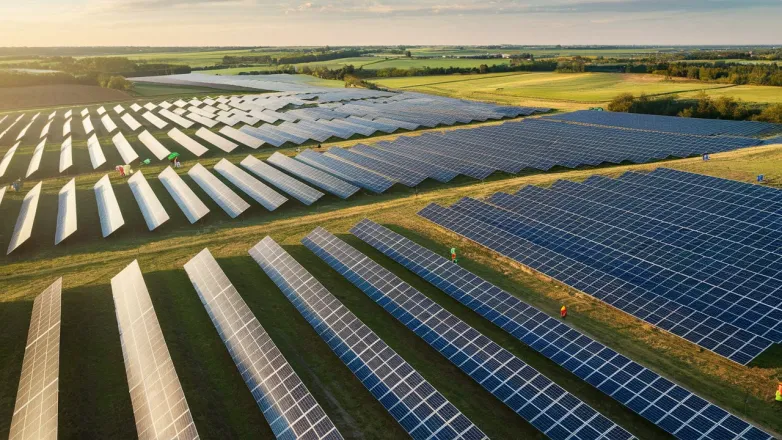Nexif Ratch Secures Funding for 154-MWp Philippine Solar
- Nexif Energy and Ratch Group's groundbreaking 154-MWp solar project in the Philippines will provide green energy for 52,600 homes, paving the way for a sustainable future!

Nexif Energy, in partnership with Thailand’s Ratch Group, has reached financial closure on a 154-MWp solar photovoltaic project in the Philippines. This joint venture, which owns 51% of the project, has committed over USD 100 million in equity and secured additional financing from Security Bank Corporation and Philippine National Bank. The Bacolod project, developed by Negros PH Solar Inc., aims to generate green electricity sufficient for approximately 52,600 households.
Located in Negros Occidental, construction of the PV park is set to begin this month, with commercial operations expected by late 2025. The generated power will be sold under a 10-year power purchase agreement with AboitizPower Corporation, with excess electricity sold in the Wholesale Electricity Spot Market. Following its recent launch of a 74-MWp facility in South Luzon, Nexif Ratch plans to expand its capacity by adding up to 20 MW and incorporating battery energy storage.
What are the key aspects of Nexif Energy's solar project in the Philippines?
Here are the key aspects of Nexif Energy's solar project in the Philippines expanded upon:
- Project Scale: The solar photovoltaic project is rated at 154 megawatts peak (MWp), which positions it as a significant renewable energy initiative within the region.
- Joint Venture Structure: Nexif Energy is collaborating with Thailand’s Ratch Group, indicating an international partnership aimed at boosting renewable energy production in Southeast Asia. Nexif Energy holds a 51% stake in the project.
- Financial Investment: The joint venture has committed over USD 100 million in equity to the project, showcasing a strong financial backing and confidence in the investment's profitability and sustainability.
- Local Financing Support: The project has successfully secured additional financing from reputable local banks, namely Security Bank Corporation and Philippine National Bank, which highlights local trust and involvement in the renewable energy sector.
- Location: The solar project is situated in Bacolod, Negros Occidental, a region known for its suitable climate conditions for solar energy generation, enhancing the efficiency and productivity of the solar panels.
- Power Generation Capacity: The projected output is sufficient to provide green electricity to approximately 52,600 households, significantly contributing to local energy needs and sustainability goals.
- Construction Timeline: Construction is set to commence soon, targeting a completion timeline that aims for commercial operations by late 2025, emphasizing Nexif Energy's commitment to timely project delivery.
- Power Purchase Agreement: The generated electricity will be sold under a 10-year power purchase agreement (PPA) with AboitizPower Corporation, ensuring a stable revenue stream and energy market participation.
- Market Flexibility: In addition to the PPA, any excess electricity generated will be sold in the Wholesale Electricity Spot Market. This approach allows for greater flexibility in managing supply and demand while optimizing revenue.
- Future Expansion Plans: Following the recent success of a 74-MWp facility in South Luzon, Nexif Ratch has expressed intentions to expand its solar capacity further by adding up to 20 MW and incorporating battery energy storage systems. This move aligns with global trends toward integrating energy storage solutions to enhance the reliability and efficiency of renewable energy systems.
- Environmental Impact: The project aligns with global and local efforts to transition to cleaner energy sources, helping to reduce carbon emissions and contribute to the Philippines’ goals for sustainable development and energy independence.
By addressing these key aspects, Nexif Energy's solar project in the Philippines reflects a robust commitment to renewable energy, financial prudence, and technological innovation.
Also read


